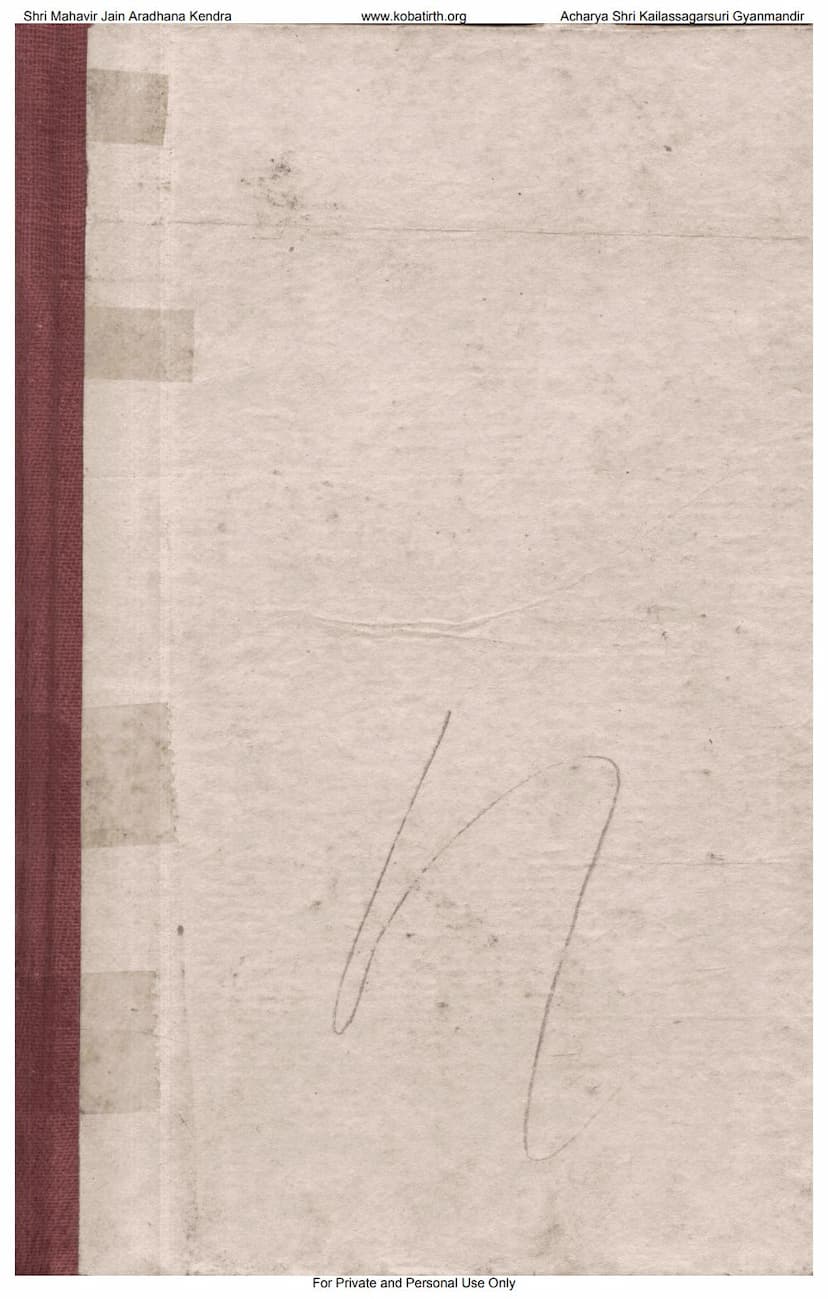Anargha Raghavam
Added to library: September 1, 2025

Summary
This is a comprehensive summary of the Jain text "Anargha Raghavam," based on the provided pages:
Title: Anargha Raghavam (Meaning: "Priceless Rama")
Author: Murari (also spelled Murari Kavi)
Commentary: Ruchipati Upadhyay
Editors/Responders: Pandit Durgaprasad and Vasudev Lakshman Shastri Pansikar
Publisher: Nirnaysagar Press, Bombay
Edition: Third Edition, Printed in 1908
Price: 2 Rupees
Overview:
The text is a dramatic play (Nataka) authored by Murari, a renowned poet believed to have lived around the 9th century CE or later. The play is a retelling of the Ramayana, focusing on the life and deeds of Lord Rama. The fact that it's published by Nirnaysagar Press and edited by respected scholars like Durgaprasad and Vasudev Lakshman Shastri indicates its significance and the effort taken to make it accessible. The commentary by Ruchipati Upadhyay suggests a tradition of scholarly engagement with the work.
Key Highlights from the Provided Text (primarily focused on the preface and the beginning of Act 1):
- Author's Antiquity and Praise: The preface attempts to establish the author Murari's antiquity, suggesting he might be older than Rajanak Ratnakara, the author of Haravijaya. It cites verses praising Murari's mastery of language and poetic skill, even comparing him favorably to Bhavabhuti. The text notes the play's popularity and widespread recitation in Kashmir.
- Commentaries: It is mentioned that multiple commentaries exist for this play, and the commentary by Ruchipati Upadhyay is considered particularly commendable and has been adopted for this edition.
- The Play's Content (Beginning of Act 1):
- Mangala (Invocation/Blessing): The play begins with a "Nandi," a traditional invocation, in the form of eight verses (Ashtapada Nandi). This Nandi praises Lord Vishnu and specifically invokes the eyes of the Lord (implied to be Lord Rama and Lakshmana in the context of the play). The description of the eyes is highly metaphorical, associating them with the sun and moon, their role in bringing joy to the Chakravaka birds and sustenance to the Chakora birds, and their deep, lotiform nature found in the navel's lotus.
- Symbolic Interpretation: The commentary (likely by Ruchipati Upadhyay) provides an allegorical interpretation of the Nandi, linking Rama and Lakshmana to Vishnu's eyes, Sita to the Chakravaka (or its beloved), and their "sustenance" as the "Parana" (breaking of a fast), representing Rama's triumph and the sustenance derived from the moon-like light of his face.
- Purpose of Poetry: The preface also touches upon the purpose of poetry, quoting various authorities (Bhoja, Rasaprakasha, Mammata) who state that good poetry brings fame, pleasure, wealth, and knowledge, and aids in understanding dharma, artha, kama, and moksha. It distinguishes between "shravya" (auditory) and "abhineya" (performative) poetry, suggesting dramas are particularly effective for teaching.
- Initial Action: The Sutradhara (stage manager) announces the beginning of the play and sets the scene, mentioning a previous problematic performance by a performer named Kalakandala who presented a play filled with intense emotions (Raudra, Bibhatsa, Bhayanaka, Adbhuta). He addresses the assembled audience (Sabhasada) and describes the glory of Lord Purushottama (Vishnu/Rama).
Jain Context:
While the title and author are not inherently Jain, the publication by "Shri Mahavir Jain Aradhana Kendra" and the presence of "Acharya Shri Kailassagarsuri Gyanmandir" prominently on the pages strongly indicate a connection to Jain educational and religious institutions. This suggests that this particular edition or the collection it belongs to is curated or made available for Jain educational purposes. The text itself, being a retelling of the Ramayana, is part of the broader Indian literary and cultural heritage, and its inclusion in Jain libraries points to its relevance or a Jain perspective on the narrative. The Jain libraries' involvement likely implies the text might be used for comparative study or to understand the cultural context in which Jainism evolved.
Overall Significance:
"Anargha Raghavam" is a significant Sanskrit drama known for its poetic quality and its contribution to the tradition of Ramayana plays. This edition, with its detailed commentary and scholarly editing, serves as a valuable resource for understanding both the play and the broader context of Sanskrit literature and drama. The Jain affiliation of the publishing and archival entities highlights the broader reach and accessibility of classical Indian literature across different religious traditions.